

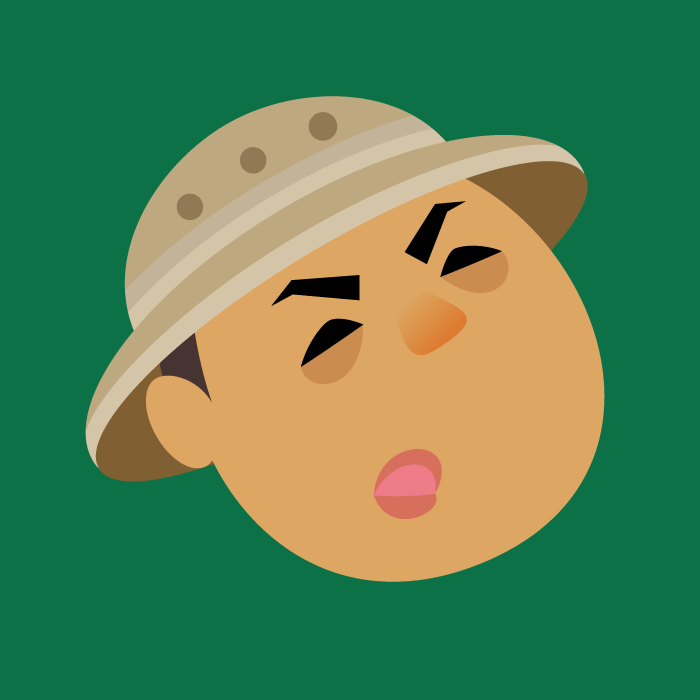
Vulas
A forest ranger from the Bunun tribe introduces his granddaughter Jasmine to mammals in nature, including their feeding habits and foraging methods based on the characteristics of their teeth and limbs. Visitors are encouraged to spend time in nature and increase their awareness of the importance of ecology and the environment to the survival of animals.
In Unit 1, the main characters are introduced : Vulas, a former forest ranger from the indigenous Bunun tribe, and his granddaughter Xiao Li.
What does a ranger do?
A ranger is a person who manages and protects the forests. They need to maintain trails, patrol trails to ensure hiker safety, and conduct surveys of wild animals. Sometimes, they also serve as guides. First, we observe if there is any danger nearby. Then, we tell visitors about the animals and plants.




Through the dialogue between grandfather and granddaughter, learn how to observe tracks and feces and from them infer which animals live nearby.
Look closely! Based on the size of the footprint, it is possible to deduce the size of the animal that made it.
If there are two or four hoofprints, they were made by an even-toed ungulate.
Here are two clear hoofprints with two behind it that are less clear. This is a wild boar! We can see some dirt mounds. These are the work of a wild boar!
Wow! The wild boar is a powerful excavator!
Sometimes, the animal’s excrement can provide clues.
This looks a lot like my poop. It is thick at one end and pointy at the other.
From bite marks on leftover food, we can infer an animal’s diet and tooth shapes.
Tooth marks are the marks left by animals from chewing or biting. They are mainly found on plant materials, such as roots, stalks, leaves, flowers and fruits, or the remains of animals. Examples include leaves chewed by the flying squirrel and seed cones chewed by Formosan rock monkeys, as well as empty snail shells left behind by ferret-badgers.
Oh! These strong tusks can help them to find a beautiful girlfriend.
Right! Jasmine, take another guess. Among the animals we have observed, which one doesn’t have teeth?
Huh? Is this like my younger sister who doesn’t have teeth yet? It can only eat soft foods that don’t need to be chewed?
Right! Do you see that hole next to the road? The pangolin has no teeth but uses its long tongue to scoop up ants from their nest.
The experience of this grandfather and forest ranger should encourage us to pay attention to the threats faced by Taiwan’s mammals.
In addition to the pangolin, animals that need protecting include the Formosan black bear and leopard cat.
It isn’t easy to see a Formosan black bear, right?
Once I saw a Formosan black bear that had come down from the mountains. It was eating honey as bees are more numerous in lower elevation environments. I saw it lean against a rock face along the edge of a waterfall. It used three limbs to prop itself up and with its free limb it obtained honey and bee pupae from the hive.
That must have been cute!
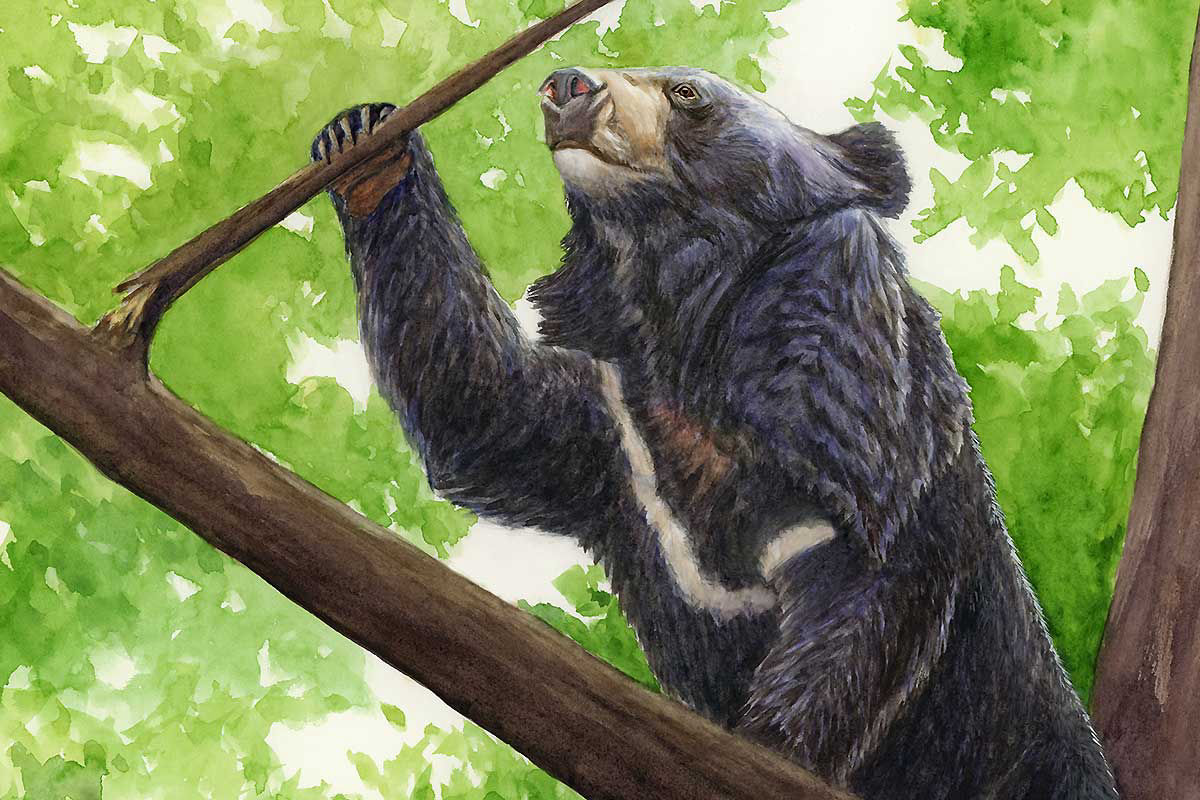
Jasmine, wild animals are better than us. We hunters often joke that flying squirrels have gone to school. Some have even attended Harvard. Actually, flying squirrels can’t fly. They can only glide. So, we should call them “mice”, the kind you use with your computer.
What? Flying squirrels glide? You went from being a hunter to a ranger. That is also something very special!
Nature is our mother. She provides us with everything. She takes care of people and all creatures.
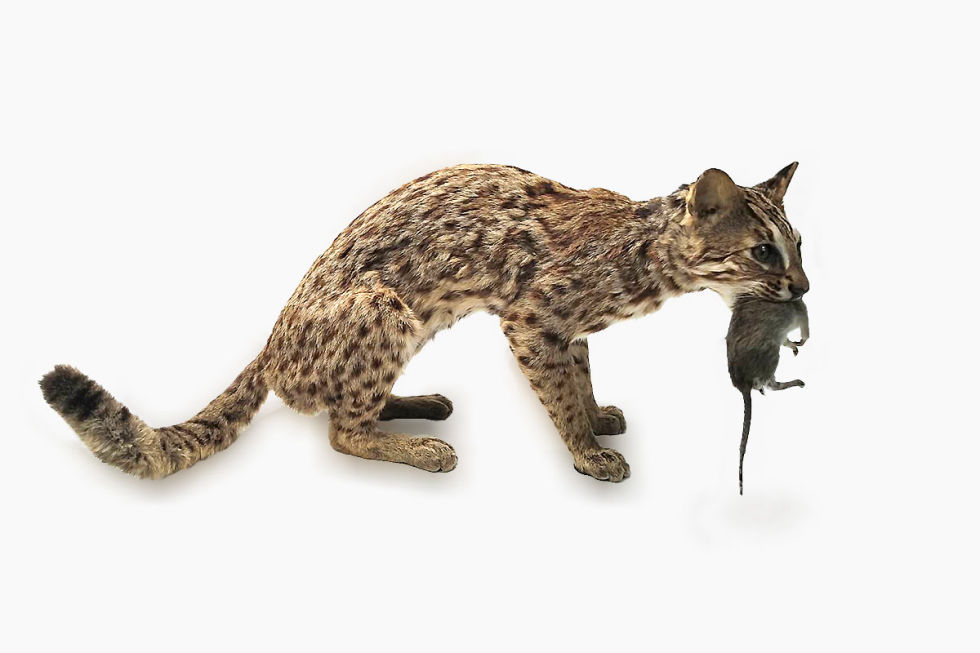
The leopard cat has leopard-like spots, from where it gets its name. On the back of its ears are white spots (absent in house cats). On its forehead are two distinctive white lines. Adult leopard cat calls are low and hoarse, different from the meowing of house cats. If food is lacking in the wild, it may venture onto farms to prey on mice and chickens, becoming susceptible to traps or poison. The only leopard cat habitats in Taiwan are in the hills of Miaoli, Taichung, and Nantou. As their numbers and habitats are rapidly decreasing, they are endangered and protected.
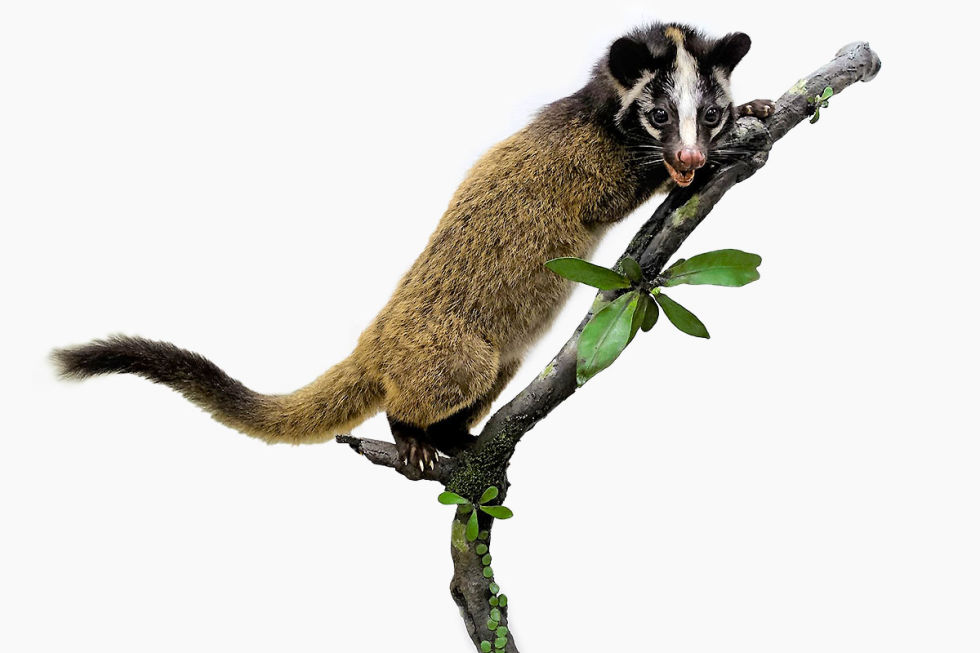
Also called the gem-faced civet, it has a white band that extends from its muzzle to the top of its head, with white spots above and below the eyes. Its body is long and cylindrical and its tail long and slender. It is adept at climbing trees. Formosan masked palm civets like to eat fruits and seeds but may also consume snails, frogs, and mice. Although they forage in orchards, on school campuses, and in parks, they are quiet and often go unnoticed.
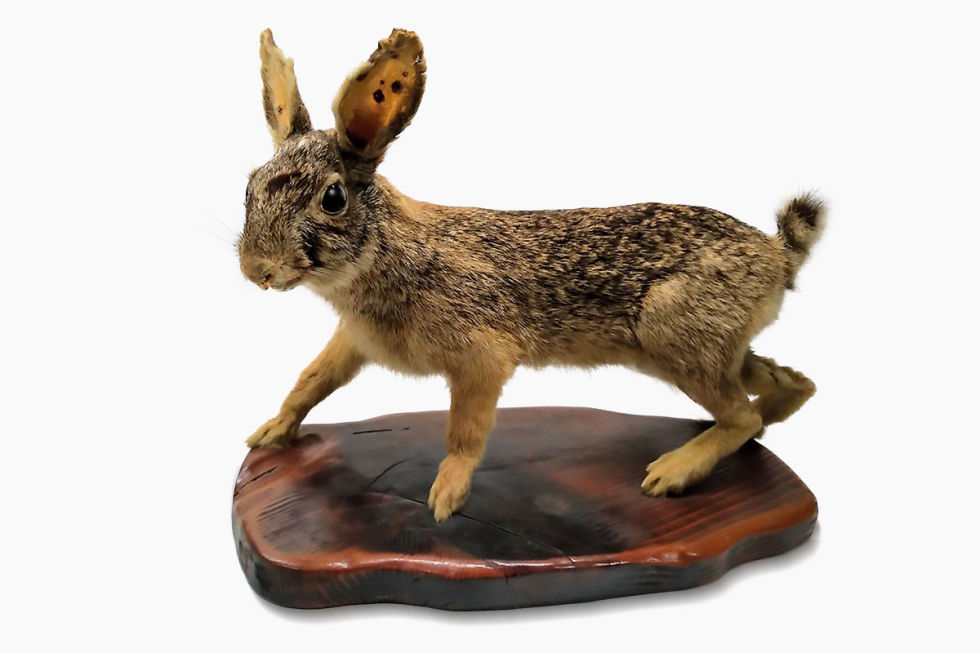
The Formosan hare is yellowish brown and weighs around 2 kilograms. It does not dig burrows. Rather, it builds a simple nest for its offspring. Formosan hares inhabit grassy areas and like to eat wild greens, such as rabbit milk weed, crown daisies, and silver grass. They often forage on farmland or pastureland.
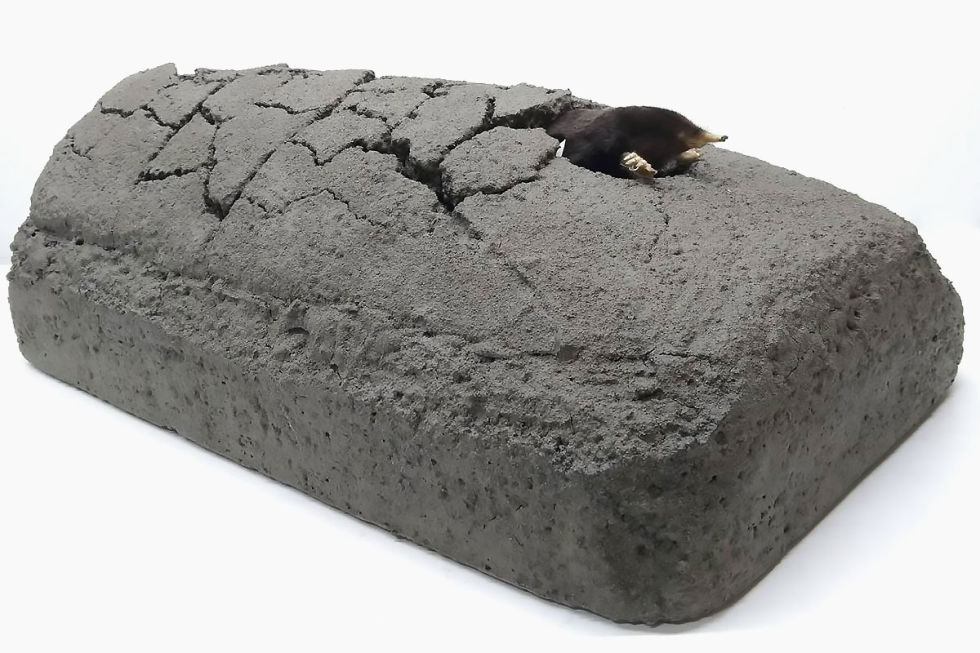
With tiny eyes and degenerate ears, moles have adapted to life underground. Their front paws are well-developed and shovel-like for digging tunnels, as evidenced by mounds of soil commonly seen in gardens. They feed on insect larvae and earthworms. Due to their voracious appetite, they consume large numbers of insects and insect larvae, helping to control pest populations.
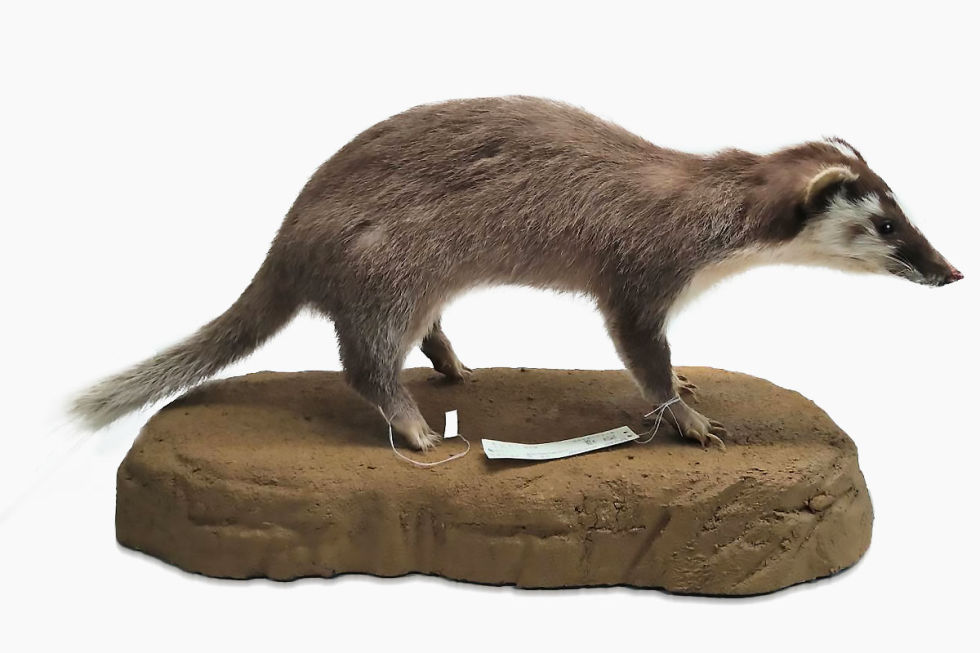
The Formosan ferret-badger is nocturnal. It has short limbs and moves slowly, relying on its sense of smell to find food along the ground. It uses its muzzle to overturn soil to find worms. It also preys on insects, lizards, birds, and mice and sometimes eats plants and fruits. Its scent glands are well-developed and emit a foul odor to repel its enemies. The white stripe down the center of its muzzle is not continuous. The end of the tail is grayish white, distinguishing it from the Formosan masked palm civet.
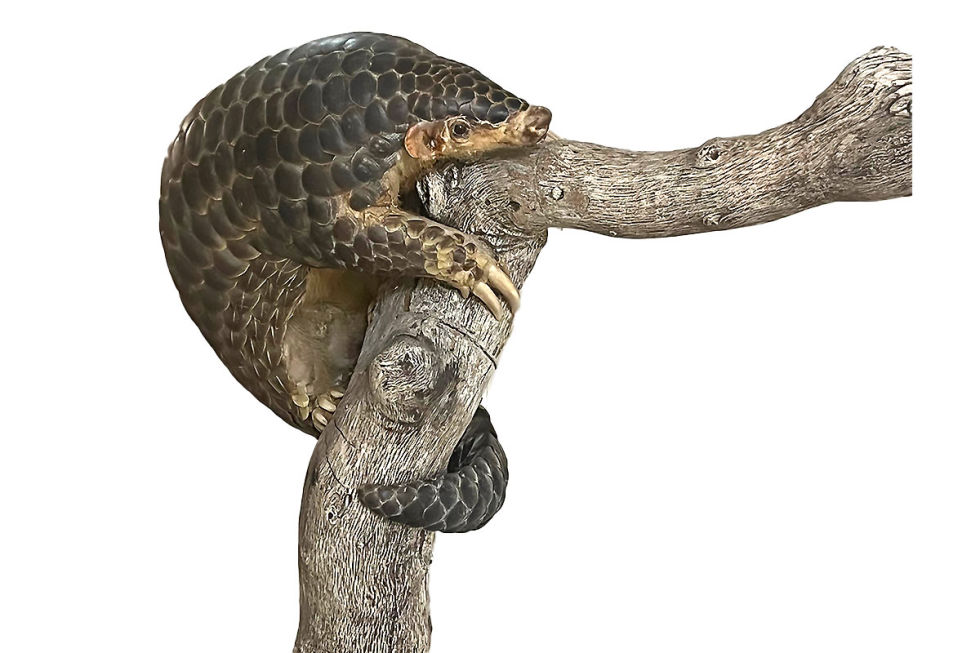
The Chinese pangolin has small ears and eyes and mainly feeds on ants and termites. It is adept at climbing trees to reach ant and termite nests. With its front claws it grasps onto the trunk and with its flexible tail it grasps onto branches. Using its specialized front claws, it digs into a nest and catches the insects inside with its long sticky tongue, which can extend and contract at around 80 times per minute.
This animal is mostly covered in hard scales. If it senses danger, it rolls into a ball to protect the areas without scales, such as the face and undersides. However, these scales are no match for the claws of wild animals or the teeth of stray dogs. Some individuals are brought to wildlife rescue stations with tail and limb injuries caused by other animals. In addition,they are hunted and sold by humans, which has led to a sharp decline in their populations. Now, pangolins are protected all over the world.
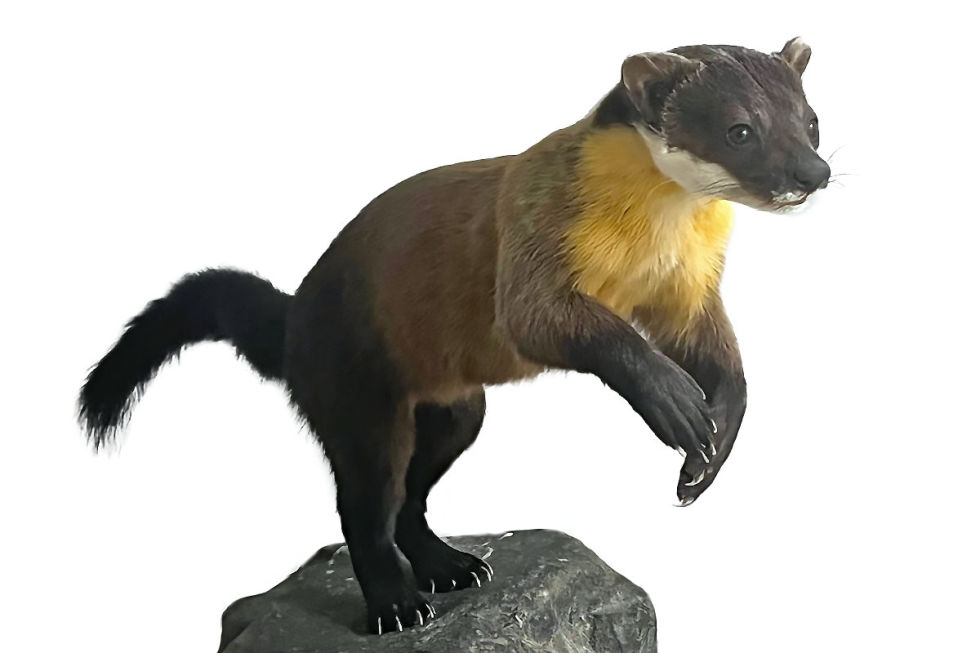
Yellow and black with white chin, it is brightly colored and beautiful. The nimble and active Formosan yellow-throated marten is a major predator in Taiwan’s mountainous areas, eating small and medium-sized mammals and birds and occasionally fruit. It is an adept runner and tree climber. Formosan yellow-throated martens cooperate when hunting, with groups of 2 or 3 taking down a Formosan muntjac.
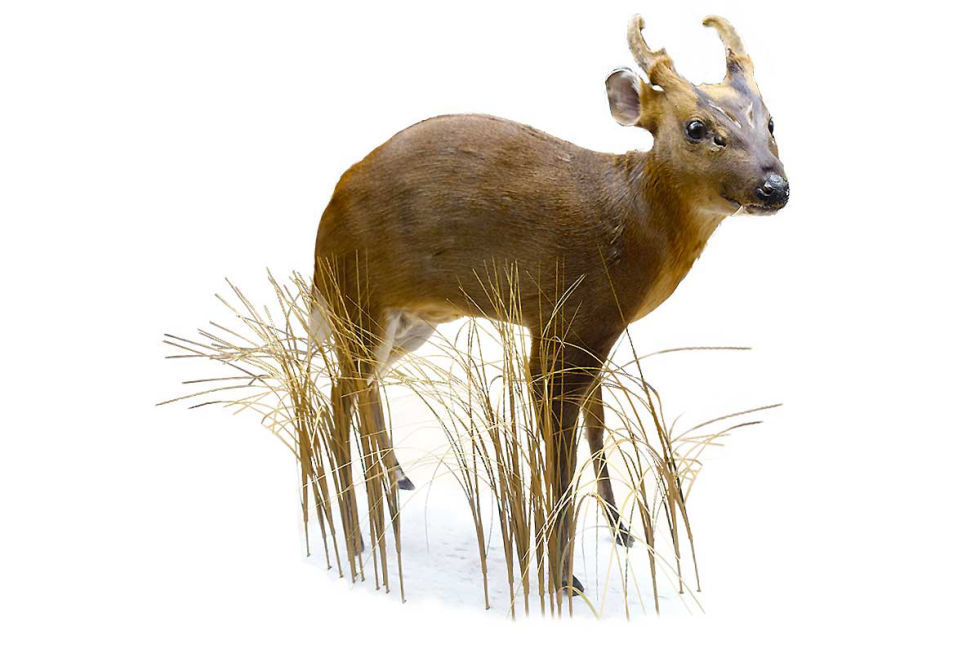
The Formosan muntjac is diurnal. Males have short antlers, which start to grow in December. They are shed in June and grow again. There are black markings in the shape of a Y from the forehead to the muzzle. The upper canines protrude outward. When fighting, they bite one another. Female Formosan muntjacs have no antlers. On the forehead are bony lumps and shield-shaped black spots. The upper canines are small and not exposed. Juveniles are covered in white spots.
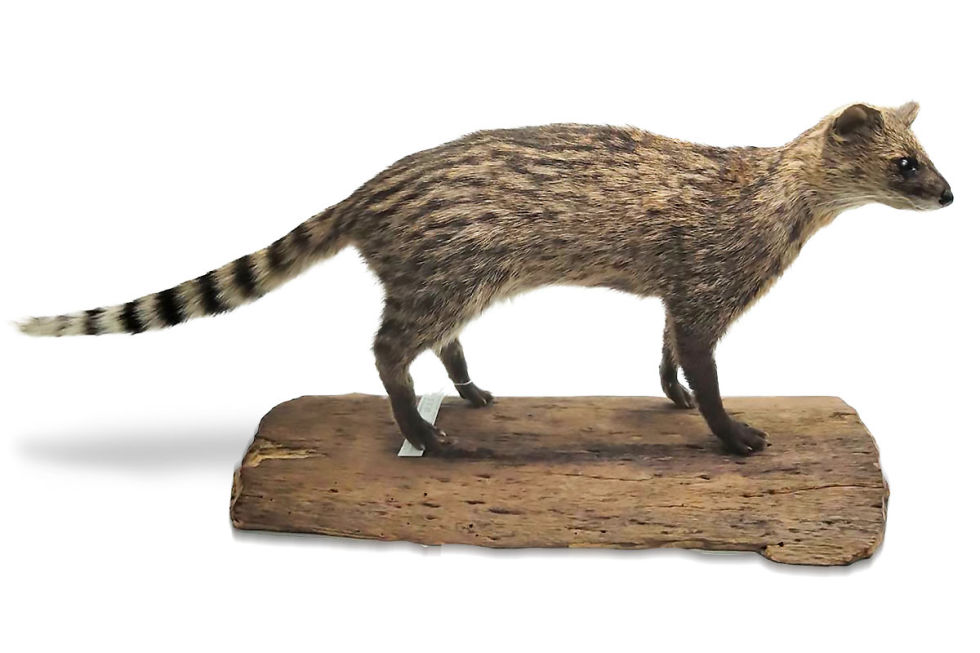
The civet is not a cat. It has a long pointy muzzle, numerous black stripes along the back and spots along the sides. The tail is thick with black rings. This is a member of the family Viverridae. Civets eat insects, plants, earthworms, birds, and rodents. They are secretive, solitary, and difficult to observe. It is necessary to rely on motion detection cameras to record them or their feces to track them.
Civets in Taiwan are not involved in the Kopi Luwak coffee trade. This coffee is from Southeast Asia, where another species, the Asian palm civet, prefers to eat fruit, such as coffee cherries.
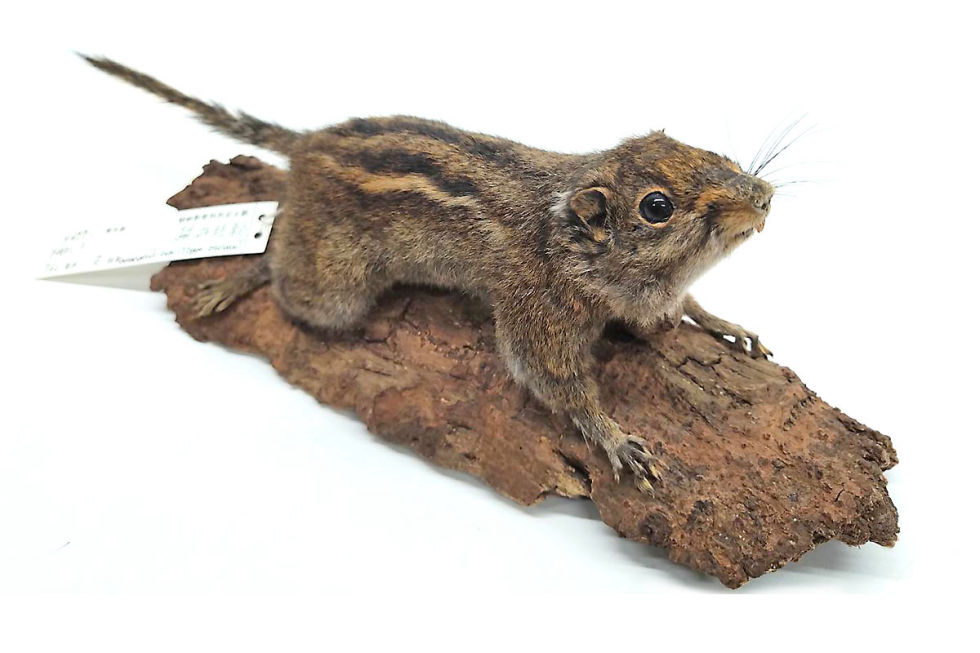
The Formosan striped squirrel is small and yellowish brown with white underside and long tail that is not thick. Along its back are three alternating yellow and black stripes. When it arches its body, it resembles a small pumpkin. It is mostly diurnal and solitary, except during the breeding season. This squirrel moves quickly and is active in broad-leaved or coniferous forest at 500-3,000 meters above sea level. It feeds on young leaves, shoots, petals, seeds, and fruits.
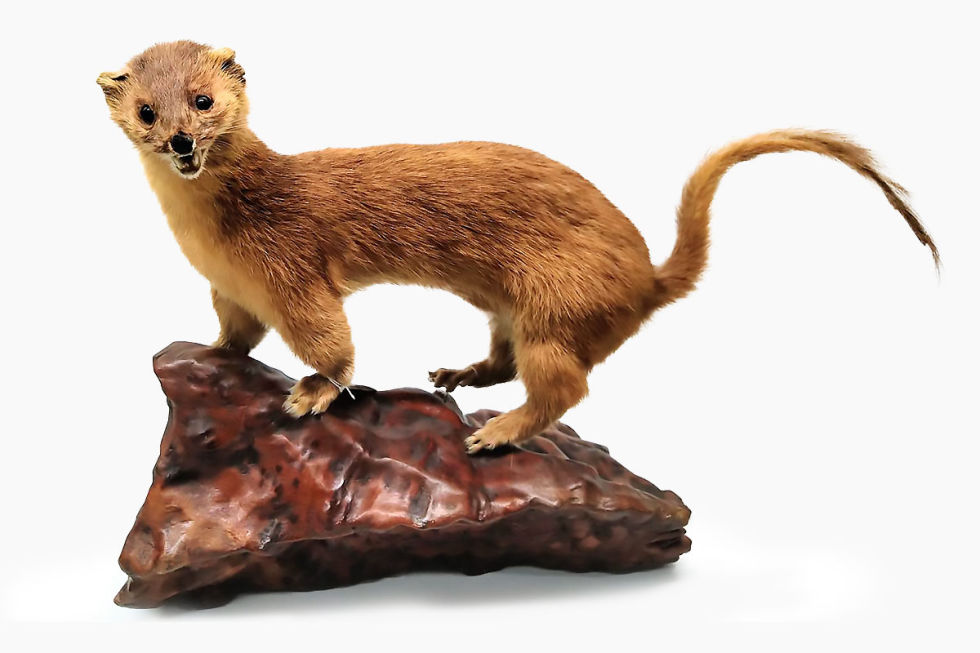
The Taiwan weasel is is tan to dark brown with a few white spots along the throat. It inhabits forests and is solitary, long, and slender, able to fit into small burrows to prey on rodents. It also eats birds, snakes, insects, and snails. If it encounters the carcass of a Formosan muntjac or Formosan serow, it burrows through the buttocks to eat the internal organs. If it senses an enemy approaching, it emits a strong odor from its anal scent glands to repel it.
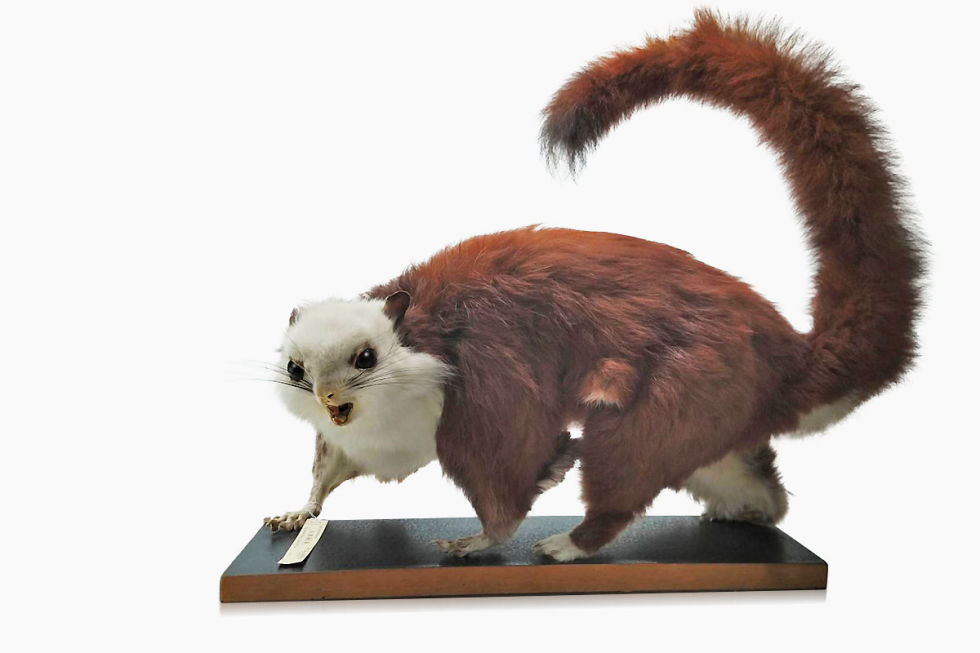
This beautiful flying squirrel is reddish brown with white face and belly. The bushy tail is longer than the body. It lives in medium to high-elevation forests, sleeping in tree cavities during the day and becoming active at night. It feeds on seed cones, berries, shoots, and tender leaves. To glide, it straightens its limbs until an attached skin flap opens. Looking up at it, it looks like a white kite as it glides to a distant tree. Its call is a high-pitched chirp.
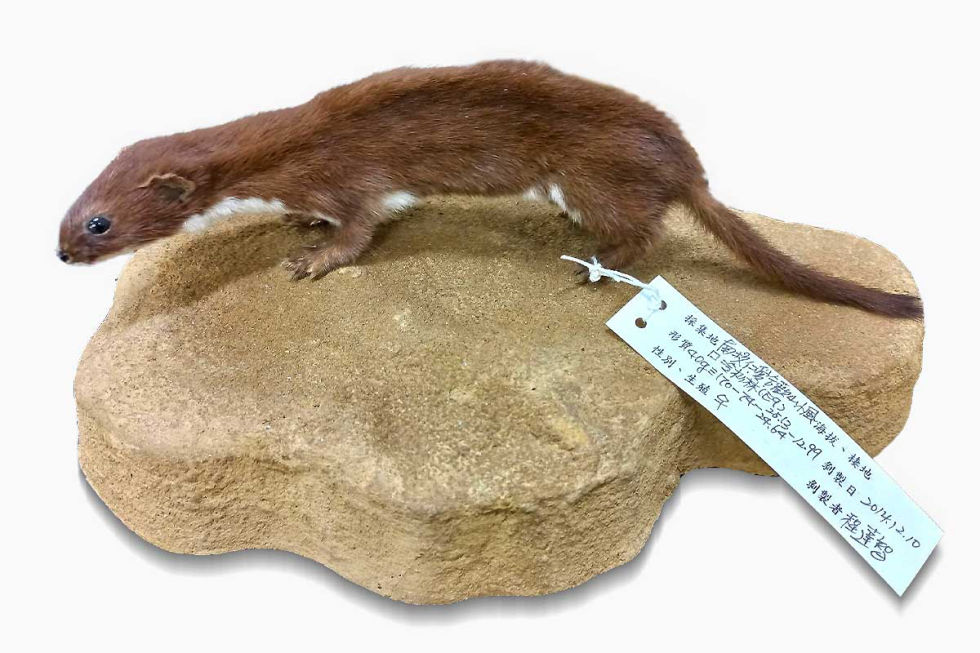
This is a subspecies of the least weasel from Taiwan. It measures 12-20 centimeters in length and weighs less than 60 grams, making it smaller than other least weasel subspecies. It is reddish brown with a white belly. It has been sighted in high mountain areas such as Hehuanshan, Yushan, and Xueshan. Least weasels are commonly distributed at high latitudes in the Northern Hemisphere. They are the smallest members of the Family Mustelidae. Moreover, they are diurnal predators that mainly eat rodents and can take down prey 5-10 times their size, for example hares weighing more than 500 grams.
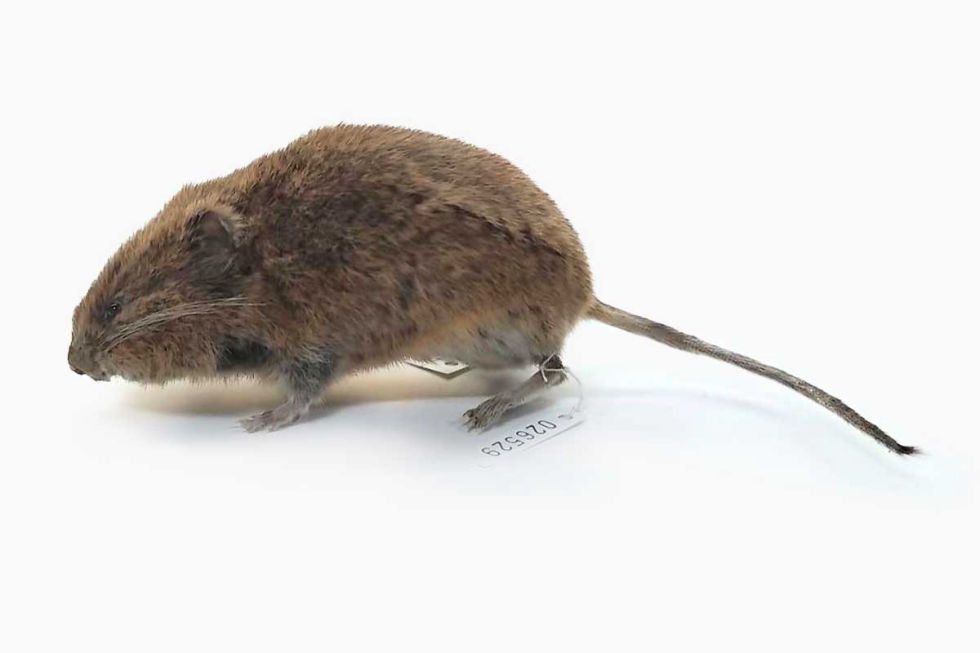
This alpine vole is dark brown along the back and grayish yellow along the belly. Its fur is long and soft. It eats a plant-based diet and its rhombus-patterned molars are well suited to grinding plant fiber. There are only 2 offspring per litter, which are raised by both parents. The Taiwan vole is mainly found at 2,500 meters above sea level and higher, making it the highest elevation rodent in Taiwan. It is seen in areas where Yushan cane grows and along coniferous forest margins. It has a strong preference for Yushan cane.
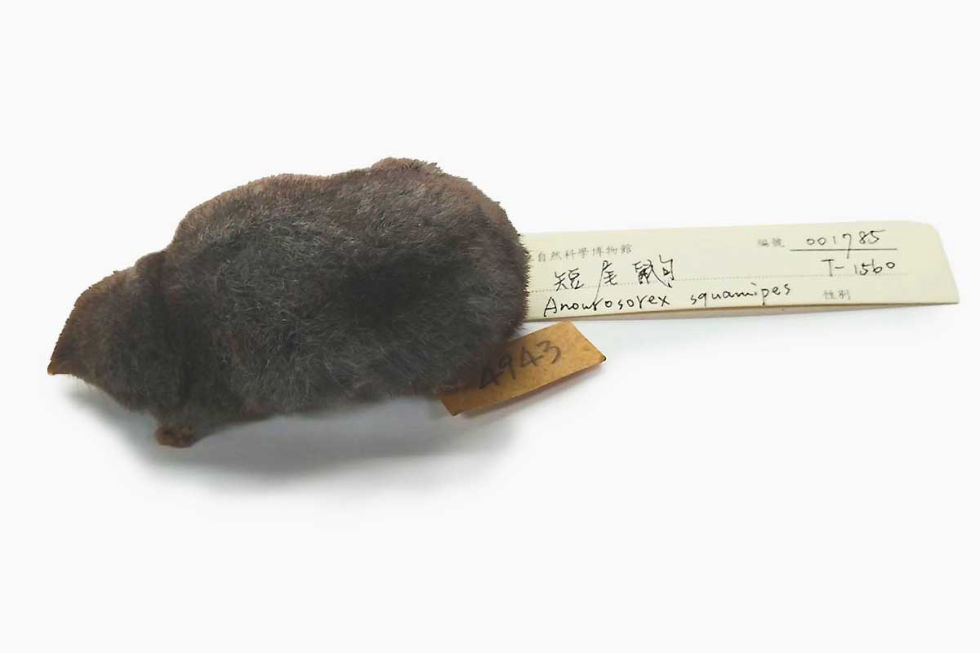
This mole shrew is common in the high mountains of Taiwan from 1,500-2,700 meters above sea level. It likes forest areas that are damp with dense ground cover, such as large piles of leaves and loose soil, through which it digs passageways. It has a pointed snout and rounded buttocks, making it appear teardrop-shaped. The eyes are small and the ears are degenerated without pinnae. However, it has keen senses of hearing, touch, and smell. It preys on small animals such as earthworms, insects, snails, and slugs. It has five toes on each paw.
